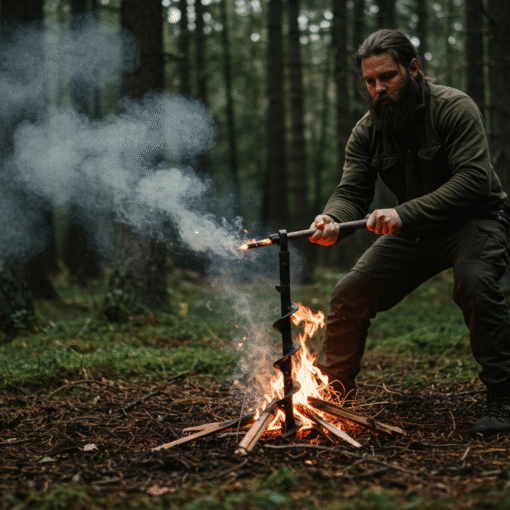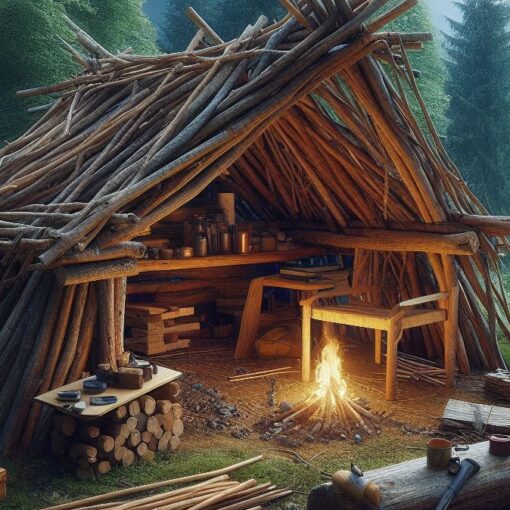Top Takeaways and Key Concepts
- Study animal habits to find prey locations and improve your hunting success.
- Pack essential gear like a sharp knife, backpack, camouflage, and safety equipment.
- Practice tracking and stalking to follow trails, footprints, and signs of wildlife.
- Use legal and safe trapping methods and follow local hunting regulations.
- Cook and clean your catch properly to stay safe and make meals enjoyable outdoors.
Summary of This Article
Please Note: This post may contain affiliate links. If you click one of them, we may receive a commission at no extra cost to you. As an Amazon Associate, I earn from qualifying purchases.
This article introduces beginners to the basics of hunting and trapping while emphasizing safety, preparation, and respect for nature. It explains how understanding animal behavior helps locate prey and why essential gear—like knives, backpacks, and camouflage—can make outdoor trips easier and safer. It covers basic hunting skills like tracking and patience, as well as how to legally and responsibly set traps. Finally, it reminds readers to properly clean and cook their catch and enjoy the wilderness experience as a rewarding adventure full of stories, skills, and growth.
Short Video Version of this Article
So, you are ready to hunt and collect. That’s great! Just give it some thought. You might be out there, feeling adventurous, or you might be eating trail mix and wondering if you made the proper decisions in life. It is a little crazy, isn’t it?
Let’s go into the thrilling world of trapping and hunting. It’s not just about catching food; it’s also about the pleasure of the chase and knowing what to look for. You need to know the ropes, like which berries are tasty and sweet and which ones could transform you into a human piñata. No, thank you for that!

It can be a little scary to get started. But practice makes perfect! You could try learning how to track animals or setting up traps. It’s like being a detective in the woods. Isn’t it fun? Just think about all the stories you’ll have. You could also amaze your buddies with what you’ve learned.
You can learn a lot, like how to be patient and how animals act. To be honest? It can take hours to wait sometimes. But what happens when you eventually capture something? So worth it. It’s like winning the lotto, but with a little more dirt on your shoes.
And don’t forget to show nature some respect while you’re out there. It’s not only about hunting; it’s about being a part of nature. Take in the fresh air, the sounds, and all the tiny things you find along the road. Good luck with your hunt, my buddy!
Understanding Your Prey
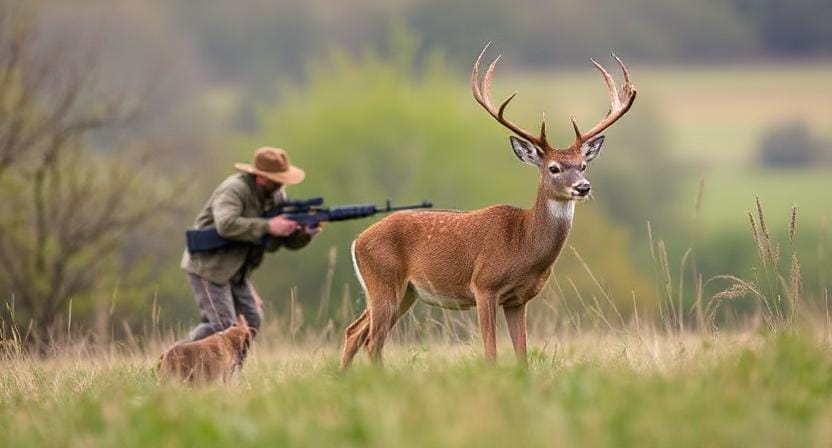
Before we start talking tactics, let’s chat about our furry (or feathery) friends. The first step in becoming a successful hunter is understanding what you’re hunting.
Are you going for deer? Squirrels? Maybe an elusive rabbit that seems to have its own personal bodyguard? Each animal has its own habits, habitats, and preferred snacks—just like us after a long day at work.
You know, deer are kinda like that friend who only shows up when food’s on the table. They love hanging around places with fresh greens and water. If you can find those spots, you might just find some deer too. It’s like a dinner invitation for them!
Rabbits? Oh man, they’re like teenagers. They’re everywhere but somehow always hiding when you’re ready to catch one for dinner. It can be super frustrating. You spot one, then poof! They disappear into thin air. Knowing how they act really helps.
Getting to know their habits can change your whole experience. Imagine coming home all proud with a nice deer. Or, at least telling tales of that sneaky rabbit who just wouldn’t sit still. It’s part of the game, right?
Every animal has its little quirks. If you figure them out, you might just have a better chance of bringing back a trophy instead of just a story. And hey, even if you don’t catch anything, the fun is in the adventure. Enjoy the journey, my friend!
Gear Up: The Essentials
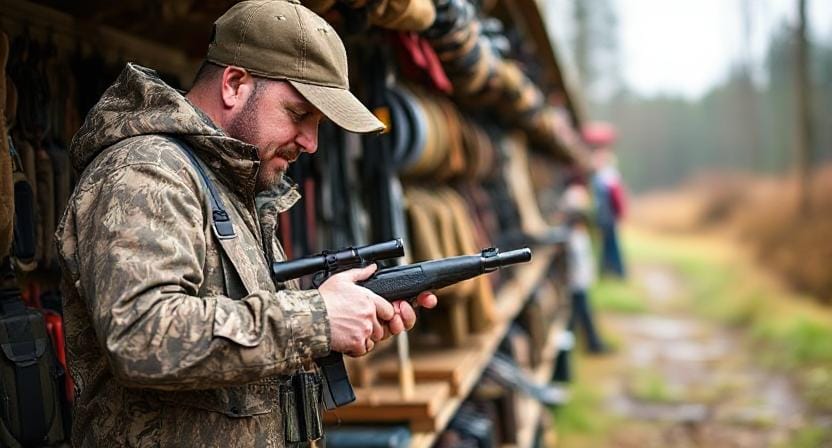
Now that we’ve established what we’re hunting, let’s talk gear. You don’t need the latest high-tech gadgets (unless you really want them). What matters most are some basic essentials: a good quality knife (not your kitchen paring knife unless you’re looking for an interesting camping experience), camouflage clothing (because nothing says stealth like neon colors), and perhaps a decent pair of binoculars—especially if you’re still working on spotting prey without scaring it off.
You really need a good backpack when you’re out there. Seriously. Once you catch something bigger than a tiny snack, you’ll be glad to have one that can hold it all. Think of it as your trusty sidekick. You want it strong and ready for anything.
Safety gear is a must, too. Like those bright blaze orange vests. They help you stand out, especially when other hunters are around. No one wants to play hide-and-seek with a bullet. It’s always better to be safe.
Common sense is your best friend. If someone starts talking about seeing Bigfoot last week, take a moment before you rush into the woods with just some granola bars. Not the best plan, right? You might end up wishing you had a little more than snacks if things get weird.
Nature can be wonderful but also tricky. Always think ahead. Stay smart and ready for anything. That way, you can enjoy every moment out there without worrying too much.
Learning Basic Techniques
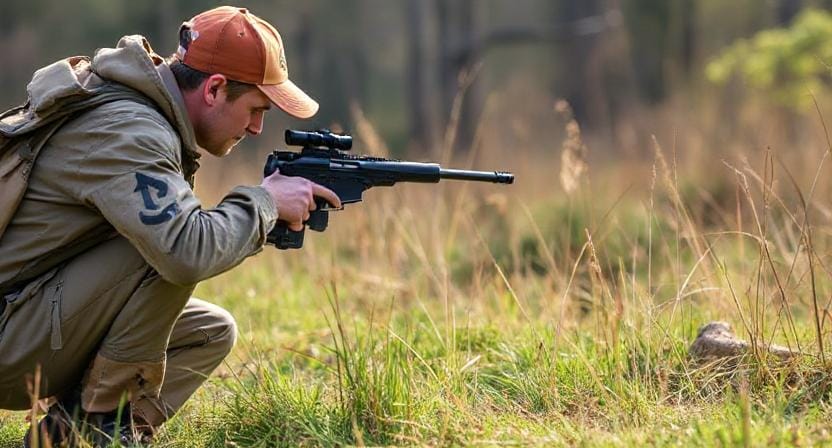
Once you’ve got your gear sorted out, it’s time to get down to business: learning how to actually hunt! There are various techniques depending on what you’re after. For instance, stalking involves quietly following animals until they’re close enough for a shot—or until they spot you wearing those brightly colored pants again!
Tracking is so much fun! It’s like being a detective trying to figure out who ate the last piece of pizza at that party. You’ve got to look close at the ground. See any tracks in the dirt? What about droppings? Yes, we’re talking about poop here. Gross, I know, but it tells you what animals have been around and what they’ve been up to.
You get to learn their secret paths. It’s kind of cool. You’re piecing together clues just like a puzzle.
And let’s chat about patience. That’s key. Hunting isn’t like a race. Sometimes it’s more like waiting in line at the airport. You know, standing there forever, hoping for something exciting to happen. You might even feel like you’ve been waiting just for someone to say they lost your luggage. The waiting can be tough, but it can pay off.
Take a deep breath. Enjoy the calm. Waiting gives you time to soak in nature. You never know when you’ll spot something amazing!
Trapping 101: Setting Up Shop
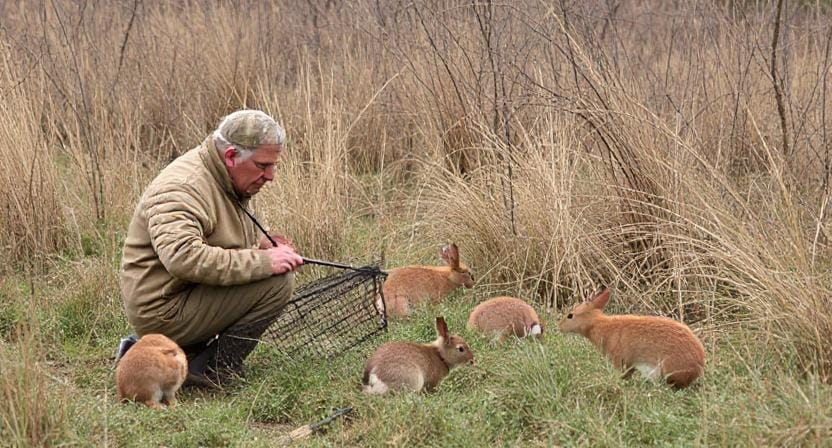
Trapping is another wonderful alternative if you don’t like hunting or don’t want to run around with sticks and scare wild creatures (which I totally understand). It means setting traps that are made just for catching prey without having to be able to run like an Olympian.
First of all, you need to know the rules governing trapping in your area. Nobody wants the wildlife officers to show up out of the blue, do they? Picture them coming to your house and asking, “Why is there a raccoon stuck in your barbecue grill trap in the backyard?” Oh no!
Choose the proper traps for the game you want to catch. Snare traps work well for trapping small animals. For bigger ones, foothold traps work well. It’s like picking the appropriate tool for the job. You wouldn’t use a butter knife to chop steak, would you?
Setting up traps may be a lot of fun. Look for clues that animals have been there, like paths through bushes or poop. Yes, crap again! These hints tell you where the animals are going. Put your traps along these routes. If someone goes by and sees what looks like bear traps with bait near the dog park, good luck explaining that!
Take care of everything and keep it safe. Always keep in mind your neighbors and their pets. You want to be the cool friend who is outside, not the one that makes everyone panic!
Cooking Your Catch
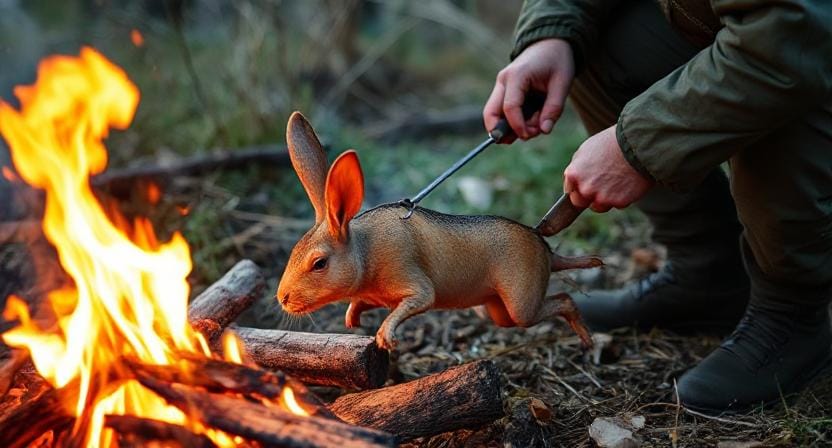
Alright! You’ve successfully hunted or trapped something delicious—now comes my favorite part: cooking it! This is where culinary creativity meets survival skills because let’s face it; no one wants bland squirrel stew unless they’re really committed to their wilderness experience.
Start by cleaning your catch properly—it sounds gross but trust me; nobody wants crunchy bits left over from nature’s buffet when they sit down for dinner later on. Then consider marinating meats with whatever spices you’ve packed; even outdoorsy folks deserve flavor!
You can roast meat over an open fire. Seriously, who doesn’t love being a little chef while also trying to remember fire safety? It’s like cooking on a grand adventure!
Imagine the smell of meat sizzling. Mouthwatering, right? You can even make soups using fresh herbs you find nearby. Just make sure you know which ones are safe. No one wants to accidentally turn into a walking salad dressing!
When everyone gathers around the campfire, you’ll feel so proud. There’s laughter, stories, and maybe even a bit of debate over whose turn it is to share next. It’s all part of the fun!
Sitting there under the stars, sipping hot chocolate or whatever you brought, it’s easy to forget all the little worries. Just you, your friends, and some good food. Enjoy those moments. They’re the best part of camping!
Final Thoughts
You don’t need much to have fun outside. You just need to be determined and know a little bit about how to hunt and trap. That’s it. It’s about going after supper or just sitting still and waiting for animals to come by. And remember, practice makes perfect!
So, do it! Get your stuff and go outside. Explore nature with a new sense of confidence. It’s not only about not being hungry. Think of all the stories you’ll have to tell when you get home. You’ll tell your friends all about the “crazy” things you’ve done.
Imagine everyone around you, hanging on your every word. They’ll be nodding, smiling, and maybe even a little jealous of what you’ve been through. That’s part of the fun, isn’t it? Every time you go out, it gets better. Have fun every minute!
Hunting and trapping for beginners starts with understanding animal behavior, using the right gear, and learning basic outdoor skills. With patience, safety awareness, and respect for nature, anyone can learn to track wildlife, set traps legally, and prepare wild game as part of a rewarding outdoor lifestyle.
Frequently Asked Questions
What should I learn first before I start hunting or trapping?
Start by learning animal behavior and movement patterns. Knowing where animals feed, travel, and rest makes it easier to track them and increases your chances of success.
Do I need special gear to get started?
Begin with essential gear like a sharp knife, backpack, camouflage clothing, binoculars, and a blaze orange safety vest. These basics help you stay prepared, safe, and effective outdoors.
How do I track animals in the woods?
Tracking involves looking for clues such as footprints, droppings, broken branches, and animal trails. These signs reveal where animals have been and where they may be heading.
Is trapping legal for beginners?
Yes, trapping is legal as long as you follow local hunting laws and use approved traps responsibly. Always check regulations and avoid placing traps near public trails or pets.
What’s the difference between hunting and trapping?
Hunting involves actively stalking or waiting for game, while trapping uses devices to capture animals over time. Both require planning and knowledge of wildlife habits.
How do I safely prepare wild game for cooking?
Clean your catch thoroughly, remove dirt and bacteria, and cook it fully over a fire or camp stove. Proper preparation prevents illness and improves flavor.
Do I need survival skills to hunt?
Basic survival skills are important. Learn navigation, first aid, fire building, and weather awareness. Carry essentials like water, a first aid kit, and emergency tools every time you go out.
Suggested Resources:
Hunting Basics
https://www.huntingbasics.com/
Trapping Tips & Techniques
https://www.trappingtips.com/
Outdoor Cooking Guide
https://www.outdoorcookingguide.com/
Wild Game Recipes
https://www.wildgamerecipes.com/

Kevin Collier is a seasoned outdoor enthusiast and writer for Trekbug.com, specializing in outdoor adventures, survival strategies, and prepping insights. With a deep love for nature and a commitment to self-sufficiency, Kevin empowers readers to embrace the wilderness confidently. He shares valuable tips, practical techniques, and inspiring stories, helping both novice and experienced adventurers develop essential skills for surviving and thriving in the great outdoors.


